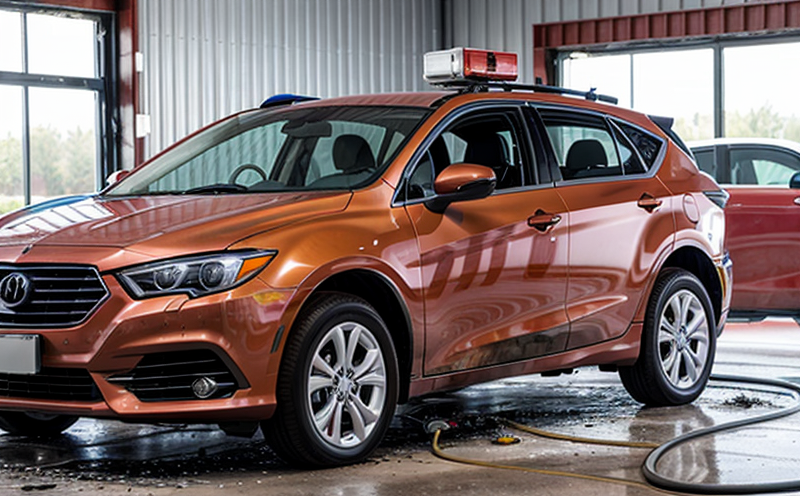FMVSS 213 Fire Testing of Child Restraint Systems
The Federal Motor Vehicle Safety Standard (FMVSS) 213 mandates fire resistance tests for child restraint systems to ensure they can withstand the intense heat and flames in a vehicle fire scenario. This regulation is critical given the potential risk of children being exposed to such hazards during accidents.
The testing process involves subjecting the child restraint system, including its fabric covering, padding, and other components, to controlled exposure to fire. The objective is to evaluate whether these materials can resist ignition or continue burning for a specified period under defined conditions. This ensures that in case of a fire, the child restraint system does not contribute significantly to the spread of flames or smoke.
FMVSS 213 testing typically follows an established protocol outlined by relevant international standards such as ISO and ASTM. The test setup includes a specially designed apparatus capable of simulating realistic fire conditions in a vehicle environment. Specimens are prepared according to strict guidelines, ensuring that the test results accurately reflect real-world performance.
The testing procedure involves several stages: pre-test conditioning, ignition initiation, duration measurement, post-test analysis, and final evaluation. Pre-test conditioning ensures that the specimen is at equilibrium with its surroundings before exposure to fire. Ignition is initiated using a specific method designed to simulate realistic conditions. The duration of burning is recorded meticulously to determine compliance.
Post-test analysis includes examining the extent of damage, residual materials, and any emissions produced during the test. These findings are critical in assessing whether the child restraint system meets FMVSS 213 requirements. Compliance with this standard not only ensures safety but also helps manufacturers meet regulatory obligations, enhancing customer trust.
The importance of accurate testing cannot be overstated. Missteps in specimen preparation or apparatus setup can lead to incorrect results and potential non-compliance issues. Our state-of-the-art laboratory facilities are equipped with the latest technology and expertise to ensure precise and reliable test outcomes. By adhering to international standards, we provide clients with confidence that their products meet stringent safety requirements.
Our team of experienced professionals understands the nuances of FMVSS 213 testing, ensuring that every aspect—from specimen preparation to final evaluation—is conducted with meticulous attention to detail. With our comprehensive approach, we help manufacturers navigate the complexities of this standard and achieve compliance effectively.
Quality and Reliability Assurance
- Consistent Testing Conditions: Our laboratory maintains a controlled environment to ensure consistent and accurate test results. This includes precise temperature control, humidity management, and adherence to standardized protocols.
- Comprehensive Reporting: We provide detailed reports outlining the entire testing process, including any deviations from standard procedures and their impact on results.
- Expert Personnel: Our team comprises highly qualified professionals with extensive experience in FMVSS 213 compliance testing. They stay updated with the latest industry standards and trends.
- Accurate Instrumentation: Utilizing advanced equipment, we ensure precise measurement of test parameters such as burning duration, flame spread rate, and emissions.
Customer Impact and Satisfaction
The FMVSS 213 fire testing is crucial for automotive manufacturers. By ensuring compliance with this standard, they demonstrate a commitment to protecting children in the event of vehicle fires. This not only enhances public safety but also contributes to brand reputation and consumer confidence.
For quality managers and compliance officers, our service provides peace of mind knowing that their products meet regulatory requirements. Our detailed reports help them identify areas for improvement and implement necessary changes promptly. R&D engineers benefit from the insights gained through thorough testing, which can inform future product development efforts.
Our services also extend to procurement teams by ensuring they source materials that are inherently fire-resistant or can withstand rigorous testing without compromising safety standards. This comprehensive approach ensures that all stakeholders in the supply chain contribute effectively towards achieving FMVSS 213 compliance.
International Acceptance and Recognition
The FMVSS 213 fire testing is recognized globally for its stringent requirements. Many countries have adopted similar standards to ensure the safety of children in vehicles. Our laboratory's compliance with these international benchmarks enhances the acceptance and recognition of manufacturers' products worldwide.
By adhering to FMVSS 213, automotive companies can enter new markets more easily without undergoing additional testing or certification processes. This standardization also fosters trust among consumers who are increasingly concerned about safety features in vehicles, particularly for children.





